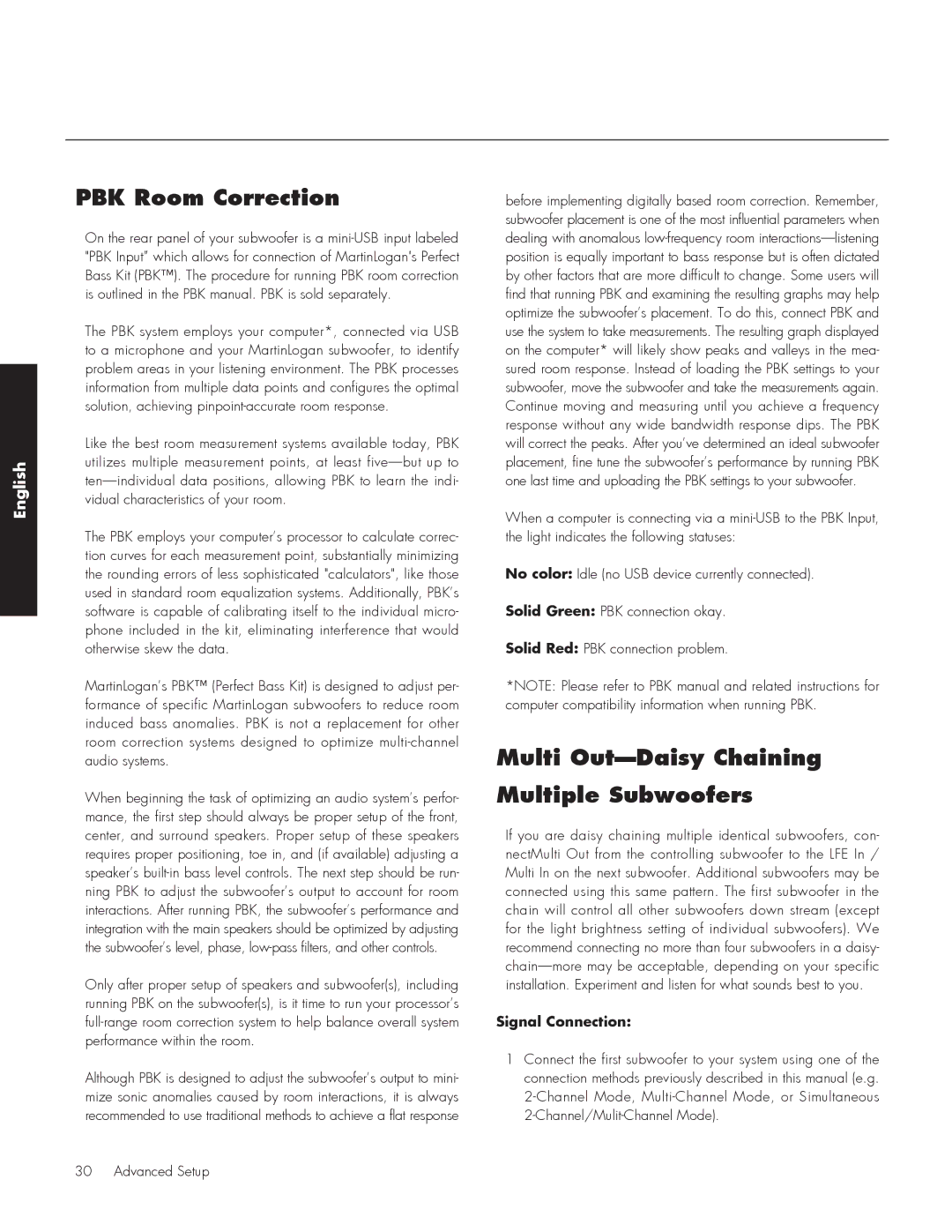
English
PBK Room Correction
On the rear panel of your subwoofer is a
The PBK system employs your computer*, connected via USB to a microphone and your MartinLogan subwoofer, to identify problem areas in your listening environment. The PBK processes information from multiple data points and configures the optimal solution, achieving
Like the best room measurement systems available today, PBK utilizes multiple measurement points, at least
The PBK employs your computer’s processor to calculate correc- tion curves for each measurement point, substantially minimizing the rounding errors of less sophisticated "calculators", like those used in standard room equalization systems. Additionally, PBK’s software is capable of calibrating itself to the individual micro- phone included in the kit, eliminating interference that would otherwise skew the data.
MartinLogan’s PBK™ (Perfect Bass Kit) is designed to adjust per- formance of specific MartinLogan subwoofers to reduce room induced bass anomalies. PBK is not a replacement for other room correction systems designed to optimize
When beginning the task of optimizing an audio system’s perfor- mance, the first step should always be proper setup of the front, center, and surround speakers. Proper setup of these speakers requires proper positioning, toe in, and (if available) adjusting a speaker’s
Only after proper setup of speakers and subwoofer(s), including running PBK on the subwoofer(s), is it time to run your processor’s
Although PBK is designed to adjust the subwoofer’s output to mini- mize sonic anomalies caused by room interactions, it is always recommended to use traditional methods to achieve a flat response
before implementing digitally based room correction. Remember, subwoofer placement is one of the most influential parameters when dealing with anomalous
When a computer is connecting via a
No color: Idle (no USB device currently connected).
Solid Green: PBK connection okay.
Solid Red: PBK connection problem.
*NOTE: Please refer to PBK manual and related instructions for computer compatibility information when running PBK.
Multi Out—Daisy Chaining Multiple Subwoofers
If you are daisy chaining multiple identical subwoofers, con- nectMulti Out from the controlling subwoofer to the LFE In / Multi In on the next subwoofer. Additional subwoofers may be connected using this same pattern. The first subwoofer in the chain will control all other subwoofers down stream (except for the light brightness setting of individual subwoofers). We recommend connecting no more than four subwoofers in a daisy-
Signal Connection:
1Connect the first subwoofer to your system using one of the connection methods previously described in this manual (e.g.
30 Advanced Setup
